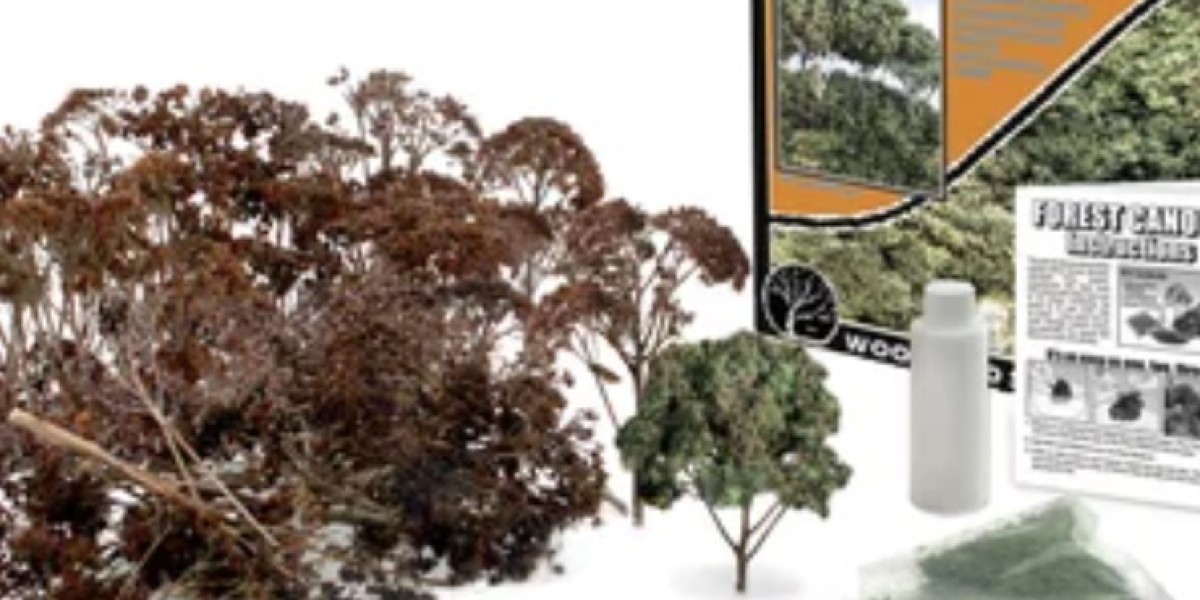Diorama kits offer a unique way to channel your creativity into realistic, miniature worlds. These kits allow hobbyists to build intricate scenes that capture a moment frozen in time, be it a historical battlefield, a serene landscape, or a sci-fi adventure. The art of diorama building requires attention to detail, creativity, and patience, but with the right techniques and materials, anyone can master it. In this article, we’ll walk through the process of creating stunning diorama kit, from start to finish, and show you how to take your miniature scenes to the next level.
Introduction
The world of diorama building offers endless possibilities for creativity. Whether you're fascinated by historical events, nature, or fantasy realms, diorama kits let you bring these scenes to life in miniature form. But what makes a diorama truly stand out? It’s all in the details! With patience, practice, and the right approach, you can craft realistic scenes that transport viewers into your miniature world. Let’s dive into the essentials of mastering diorama kits and creating scenes that look as though they could leap off the table.
Choosing the Right Diorama Kit for Your Skill Level
Beginner, Intermediate, and Advanced Kits
If you're new to diorama building, it's important to choose a kit that matches your skill level. Beginner kits typically come with simple instructions and fewer components, making them easier to assemble. As you gain experience, you can move on to intermediate and advanced kits, which include more complex pieces and require greater attention to detail.
Brands to Consider: MiniArt, Roden, Master Box, ICM
When it comes to selecting the right diorama kit, quality matters. Leading brands like MiniArt, Roden, Master Box, and ICM offer high-quality kits that cater to all skill levels. Whether you're building a historical scene or a modern-day setting, these brands provide detailed instructions and well-crafted parts that ensure a satisfying building experience.
Planning Your Diorama: Concept and Layout
Visualizing the Scene: Storytelling Through Dioramas
Every great diorama tells a story. Before you start assembling your kit, take time to visualize the scene you want to create. What is happening in the scene? Who are the characters? What emotions or actions do you want to convey? Storytelling through dioramas is key to making your miniature scene captivating.
Sketching and Mapping Out Your Layout
Once you have a concept in mind, sketch out your ideas. This will help you map out where to place key elements such as figures, vehicles, or buildings. Planning the layout of your diorama ensures that all the pieces fit together harmoniously and that the final scene is cohesive.
Essential Tools and Materials for Diorama Building
Basic Tools You’ll Need
To get started with diorama building, you'll need some essential tools. These include:
- A hobby knife
- Tweezers
- Glue (modeling cement or super glue)
- Paintbrushes (small sizes for detailing)
- A cutting mat
Having these basic tools on hand will make the assembly process smoother and more precise.
Specialty Materials for Advanced Builds
As you become more experienced, you may want to experiment with advanced techniques. This is where specialty materials like static grass, weathering powders, and terrain foam come in handy. These materials allow you to add realistic textures and effects to your diorama, elevating the overall look of your scene.
Building the Base: Creating a Strong Foundation
Choosing the Right Base Material
The base of your diorama is the foundation upon which everything else is built. Choose a sturdy material, such as foam board or wood, that will support the weight of your scene. The base should be strong enough to hold your miniatures and any added terrain.
Crafting Terrain and Groundwork
The terrain is an essential element that brings your diorama to life. You can use materials like plaster, foam, or textured paint to create hills, valleys, or flat surfaces. Pay close attention to the terrain's natural flow, ensuring that it complements the overall scene you're creating.
Adding Detail to Your Scene: Miniatures and Accessories
Painting and Assembling Miniatures
Miniatures are often the focal point of a diorama, so take care when painting and assembling them. Start with a primer coat to ensure the paint adheres well, and use fine brushes to add detailed highlights and shadows to the figures.
Incorporating Diorama Accessories
In addition to miniatures, accessories like buildings, vehicles, and natural elements (trees, rocks, water features) can greatly enhance the realism of your diorama. Pay attention to scale and proportion to ensure that all elements blend seamlessly together.
Mastering Scale and Proportion
How to Choose the Right Scale for Your Scene
Choosing the correct scale is vital for creating a realistic diorama. Common scales include 1:35, 1:48, and 1:72, with each scale offering different levels of detail. Smaller scales are ideal for larger scenes, while larger scales allow for more intricate detailing on individual miniatures.
Balancing Large and Small Elements for Realism
Maintaining balance between large and small elements helps create a realistic and visually appealing scene. For example, if you're creating a diorama of a battlefield, be sure that the size of the soldiers matches the size of the tanks and terrain.
Techniques for Creating Realistic Effects
Weathering and Aging for Added Depth
Weathering techniques, such as dry brushing and washes, can add depth and realism to your diorama. By simulating rust, dirt, and wear on objects, you give your scene a lived-in look that feels more authentic.
Simulating Water, Fire, and Other Natural Elements
Want to add a river or pond to your diorama? Resin or gel products can be used to create realistic water effects. For fire or smoke, cotton and LEDs can simulate flames or explosions, bringing more dynamic energy to your scene.
Color and Lighting: Bringing Your Diorama to Life
Using Paint to Set the Mood
Color is a powerful tool in diorama building. Whether you're creating a bright, cheerful scene or a dark, moody setting, the right choice of paint colors can set the tone. Experiment with different shades and tones to see how they affect the mood of your diorama.
Incorporating Light Effects for Dramatic Scenes
Adding lighting can make your diorama pop. LED lights or spotlights can be used to highlight key areas of your scene, such as a campfire or a glowing alien spacecraft. The strategic use of light adds depth and drama to your work.
Common Mistakes to Avoid in Diorama Building
Overcomplicating the Scene
While details are important, it's easy to overdo it. Avoid cluttering your diorama with too many elements. Focus on the key components that tell your story and let them shine.
Ignoring Scale Consistency
One of the biggest mistakes in diorama building is mixing scales. Ensure that all of your elements—figures, vehicles, and buildings—are in the same scale for a cohesive and believable scene.
Finishing Touches: Sealing and Protecting Your Diorama
Varnishing and Sealing for Longevity
Once your diorama is complete, it's important to protect your hard work. Apply a varnish or sealant to safeguard your paint job and keep the diorama looking fresh for years to come.
Displaying Your Diorama Safely
Consider using a display case to protect your diorama from dust and damage. This will also make it easier to showcase your work to others while keeping it safe.
Why Buy from Plastic-Models-Store.com?
At Plastic-Models-Store.com, we offer a wide range of diorama kits and accessories from top brands like MiniArt, Roden, Master Box, and ICM. Our selection caters to hobbyists of all skill levels, providing everything you need to build stunning dioramas. We pride ourselves on excellent customer service and are always here to help you find the perfect kit for your next project.
Conclusion
Creating realistic miniature scenes with diorama kits is a rewarding and creative process. By mastering the techniques of planning, detailing, and finishing, you can build incredible worlds in miniature form. Whether you’re a beginner or an experienced builder, there’s always room to improve and expand your diorama-building skills. So, why not dive in and start your next project today?
FAQs
- What are the best tools for diorama beginners?
Basic tools like a hobby knife, tweezers, and glue are essential for beginners, along with paint and brushes for detailing. - How do I choose the right scale for my diorama?
The scale depends on the type of scene you're creating. Common scales are 1:35 for military models and 1:72 for larger scenes. - Can I create custom dioramas with multiple kits?
Yes, mixing and matching kits from different brands can help you create a unique and custom scene. - What’s the best way to create realistic water effects?
Resin or gel products are excellent for simulating water, giving your diorama a lifelike appearance. - How can I protect my finished diorama?
Apply a varnish or sealant to preserve your work and consider using a display case to protect it from dust and damage.
Our Social Pages:
https://plastic-models-store.com/
https://www.facebook.com/plastic.models.store



